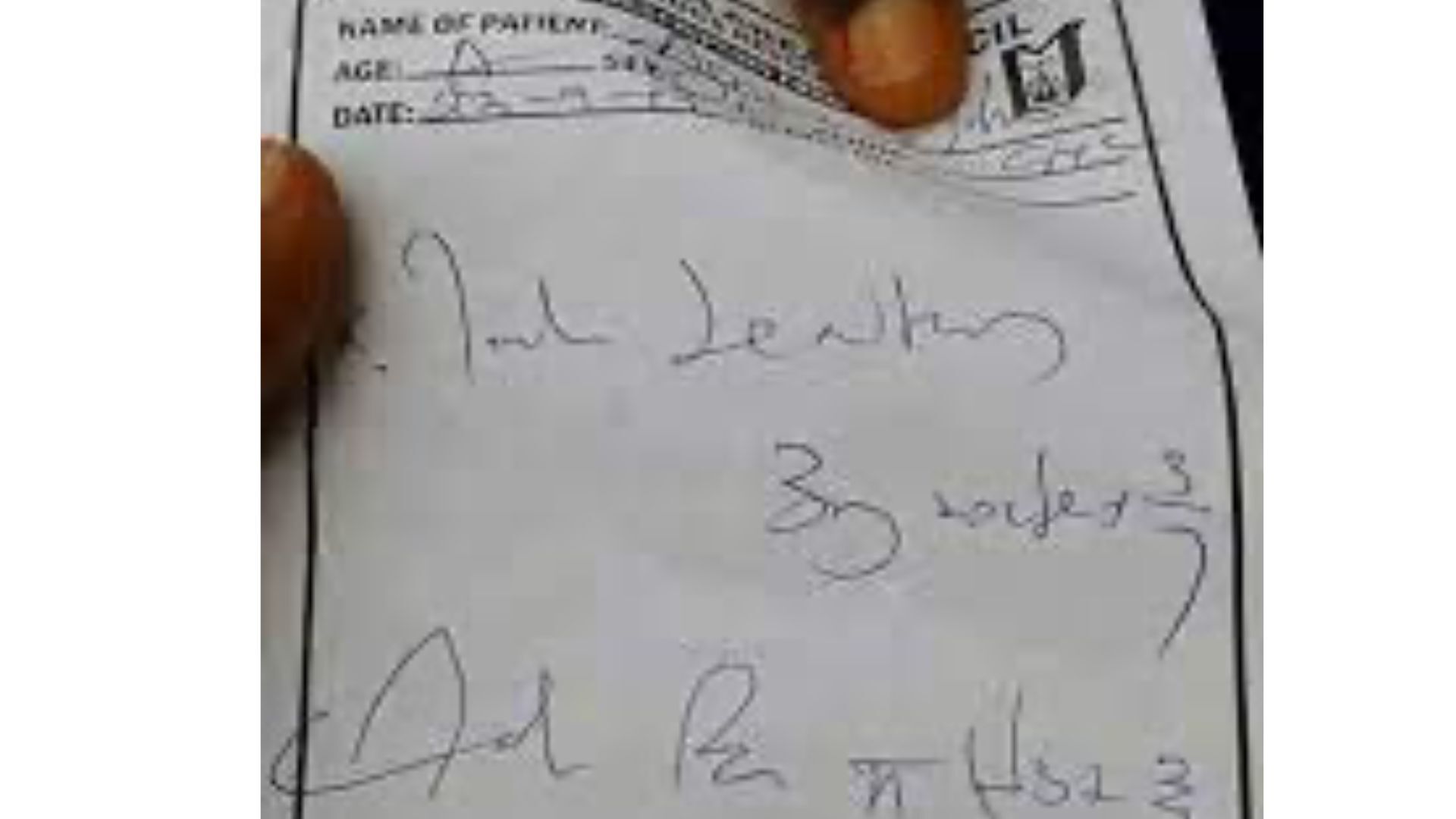Politics
High Court Mandates Legible Prescriptions to Ensure Patient Safety

The Punjab and Haryana High Court has declared that a “legible medical prescription is a fundamental right,” emphasizing the life-or-death stakes associated with unclear handwriting from medical practitioners. Justice Jasgurpreet Singh Puri made this observation while reviewing a case that involved serious allegations, including rape, cheating, and forgery. During the proceedings, he encountered a medico-legal report from a government doctor that he found completely illegible.
“It shook the conscience of this court as not even a word or a letter was legible,” Justice Puri remarked in his ruling. He described it as “shocking” that government doctors continue to issue handwritten prescriptions that are indecipherable, except perhaps to select pharmacists. In response, the court has ordered the government to implement handwriting education in medical training and to adopt digitised prescriptions within two years. Until these measures are in place, all doctors must write prescriptions in clear, capital letters to prevent errors.
The ruling has sparked renewed discussions regarding the notorious issue of doctors’ handwriting, which is often the subject of light-hearted jokes in India and elsewhere. Nonetheless, medical professionals stress that this issue is critical. Illegible prescriptions can result in misdiagnosis, incorrect medication, and even fatalities.
According to a report from the BBC, Dr. Dilip Bhanushali, president of the Indian Medical Association (IMA), which represents over 330,000 doctors, highlighted that while many urban physicians now utilize digital prescriptions, the problem still persists in rural and smaller clinics. “It’s true that many doctors have poor handwriting, but overcrowded hospitals and heavy workloads make it difficult to write neatly,” he noted. Dr. Bhanushali added that the IMA has advised its members to adhere to the court’s directives by writing in bold, clear letters.
This isn’t a new concern for the Indian judicial system. Previous criticism of illegible handwriting has come from the Odisha High Court and the Allahabad High Court, which have flagged prescriptions described as “zigzag” or “shabby.” Globally, the dangers of unreadable prescriptions are well-documented. A 1999 Institute of Medicine (IoM) report estimated that medical errors were responsible for at least 44,000 preventable deaths annually in the United States, with approximately 7,000 attributed to poor handwriting. In the United Kingdom, health authorities have acknowledged that medication errors have led to significant harm, with electronic prescribing potentially reducing mistakes by half.
Despite the severity of the problem, India currently lacks official statistics detailing the consequences of illegible prescriptions. Nevertheless, numerous cases have emerged, such as patients receiving incorrect medications due to misinterpreted prescriptions. A particularly tragic incident occurred in Noida in 2014, when a three-year-old child died after receiving an incorrect injection.
In light of these dangers, pharmacist Chilukuri Paramathama from Telangana filed a public interest petition advocating for a ban on handwritten prescriptions. His efforts contributed to the Medical Council of India’s 2016 directive mandating that all doctors write generic drug names “legibly and preferably in capital letters.” Despite this directive, pharmacists still report receiving illegible prescriptions nearly a decade later.
Ravindra Khandelwal, CEO of Dhanwantary Pharmacy in Kolkata, expressed concern, stating, “We sometimes have to call doctors for clarification because it’s critical that we dispense the right medicine.”
As the court pushes for digitisation and improved clarity in medical prescriptions, this ruling serves as a crucial reminder that even a few illegible words can have significant consequences for patient safety. In an era where technology offers viable alternatives, the importance of clear communication in the medical field remains paramount.
-

 World3 months ago
World3 months agoTest Your Knowledge: Take the Herald’s Afternoon Quiz Today
-

 Sports3 months ago
Sports3 months agoPM Faces Backlash from Fans During Netball Trophy Ceremony
-

 Lifestyle3 months ago
Lifestyle3 months agoDunedin Designers Win Top Award at Hokonui Fashion Event
-

 Sports3 months ago
Sports3 months agoLiam Lawson Launches New Era for Racing Bulls with Strong Start
-

 Lifestyle3 months ago
Lifestyle3 months agoDisney Fan Reveals Dress Code Tips for Park Visitors
-

 World3 months ago
World3 months agoCoalition Forms to Preserve Māori Wards in Hawke’s Bay
-

 Health3 months ago
Health3 months agoWalking Faster Offers Major Health Benefits for Older Adults
-

 Politics3 months ago
Politics3 months agoScots Rally with Humor and Music to Protest Trump’s Visit
-

 Top Stories3 months ago
Top Stories3 months agoUK and India Finalize Trade Deal to Boost Economic Ties
-

 World3 months ago
World3 months agoHuntly Begins Water Pipe Flushing to Resolve Brown Water Issue
-

 Entertainment3 months ago
Entertainment3 months agoExperience the Excitement of ‘Chief of War’ in Oʻahu
-

 Science3 months ago
Science3 months agoNew Interactive Map Reveals Wairarapa Valley’s Geological Secrets









